Ski to Your Cabin in the Woods
When you ski into one of these Vermont cabins, you can enjoy backcountry powder by day and curl up by the fire at night.
When we arrived at the pull-off for Chittenden Brook Campground off Route 73 in Rochester, the lot was
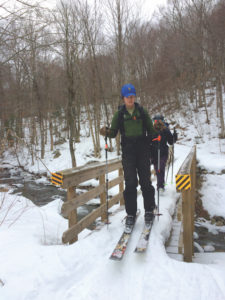
a sheet of ice broken only by pieces of frozen gravel emerging from the dirt road below. I’d come with a group of friends in search of the more than 20 gladed ski runs, some over 1,300 vertical feet, that the Rochester/Randolph Area Sports Trail Alliance’s Brandon Gap Backcountry Ski Zone is known for. It was New Year’s eve and we felt like we’d won the lottery: we managed to book one of the first stays at one of Vermont’s newest public backcountry cabins: Chittenden Brook Hut.
It was cold—the first day of bitter cold after a serious, rain-drenched thaw struck the Greens over Christmas, just after the hut opened in early December. Loading our sled with the night’s dinner and New Year’s day breakfast, we shouldered our packs, slapped skins on skis and gingerly made our way up the two-mile road to the cabin.
Arcing through the forest, we followed Chittenden Brook into the heart of the Green Mountain National Forest, sometimes rising on a ridge above it, sometimes moving along its banks. The beauty of the basin was striking and though we could see maple and beech leaves poking through the thin snow that lay between the trees, we were grateful for the light dusting we found on the icy road and each other’s company.
After an hour of skinning, we reached the hut, where we spent the evening cooking on the gas range,
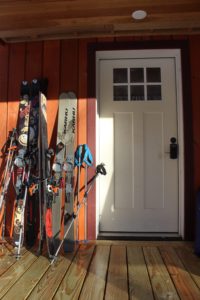
playing card games, eating a multi-course dinner and welcoming new faces as bobbing headlamps emerged at the hut windows. We drank cold beers from Shelburne’s Fiddlehead brewery and sampled anassortment of local cheeses and Vermont-made salumi, followed by homemade black bean chili and warm, freshly-baked molasses cornbread with butter. The cabin was a small bubble of warmth that let us hunker down as sleet pounded the world outside. We laughed, ate well and played charades by the light of our headlamps. It was a welcome break from phones, technology and noise.
When we awoke the next morning it was to four inches of fresh, heavy snow. I marveled at how compelling the wilderness looked from my sleeping bag and dry bunk. We discussed the day’s adventure over piping hot cups of coffee and, later, breakfast burritos. Though the base depth was insufficient to warrant a trip to the Brandon Gap Backcountry Ski Zone, when we skied out on the road, it was on a generous layer of buttery fresh snow.
A Backcountry Explosion
This year, Vermont saw a veritable explosion when it came to new year-round backcountry destinations. Skiers have had access to the Green Mountain Club’s Bryant Camp and Bolton Cabin and Vermont State Parks’ Stone Hut for years (and all three have recently had major renovations), but as of this winter, there are a host of new options across the state.
RJ Thompson is the executive director of the Vermont Huts Association, a Stowe-based nonprofit founded in 2016 with the mission of establishing a system of backcountry cabins across the Green Mountain State.
Thompson says that Chittenden Brook Hut’s popularity has already exceeded the organization’s expectations. “We had forecast maybe 60 percent occupancy for this winter, but the hut is booked solid for January and February and there are just two open nights in March,” said Thompson in early January.
Chittenden Brook is one of three new huts the organization has added to the seven huts currently in the system and in 2018 the nonprofit also announced plans to rebuild its cabin at South Pond in Chittenden, Vt., which burned in an arson fire in January 2018.
Geared more for cross-country touring rather than downhill skiing, the Nulhegan Confluence Hut
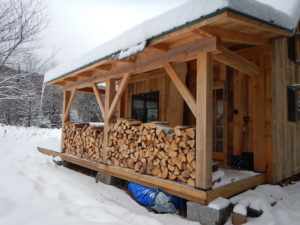
($25 per night per bed, $75 per night for whole hut), is owned by the Vermont River Conservancy and operated by Vermont Huts Association. It opened for reservations in September 2018. Built by students at Waitsfield’s Yestermorrow School of Design, the cabin sleeps six and sits at the confluence of the Nulhegan River and its East Branch, just three miles before the Nulhegan joins the Connecticut River.
The Nulhegan is a truly wild river that cuts through the heart of one of the state’s most wild places: the Nulhegan Basin. Ninety percent of the river’s tributaries are protected through public land or conservation easements, and the insulated 14-by-18-foot timber framed cabin sits on a 70-acre parcel of conserved land. A propane range, cooking implements and a woodstove are provided, but guests should be prepared to treat their own water. The cabin features a couch and seating area around the fire, with a loft sleeping area accessible by a wooden ladder. By day, explore the massive network of VAST trails nearby, or one of the many old logging roads near the property by cross country skis or snowshoes.
And in early January, 2019, Vermont Huts opened reservations for a new cabin, the Triple Creek Cabin ($88 per night for the whole hut) in Huntington, just off of Camel’s Hump Road. Nestled against one of Vermont’s highest peaks in the intricate network of backcountry and cross-country ski trails that surround it, the cozy cabin sleeps four and is a perfect skiers’ getaway. Like the Nulhegan hut, it has a propane cooktop and a wood-burning stove. Because it is located on private land, its exact location is revealed to guests when they make a reservation. It makes for the perfect stop for anyone traveling on the Catamount Trail, which runs along the length of Vermont and comes very close to the cabin’s door, or as a base camp for those hiking the peak in the winter.
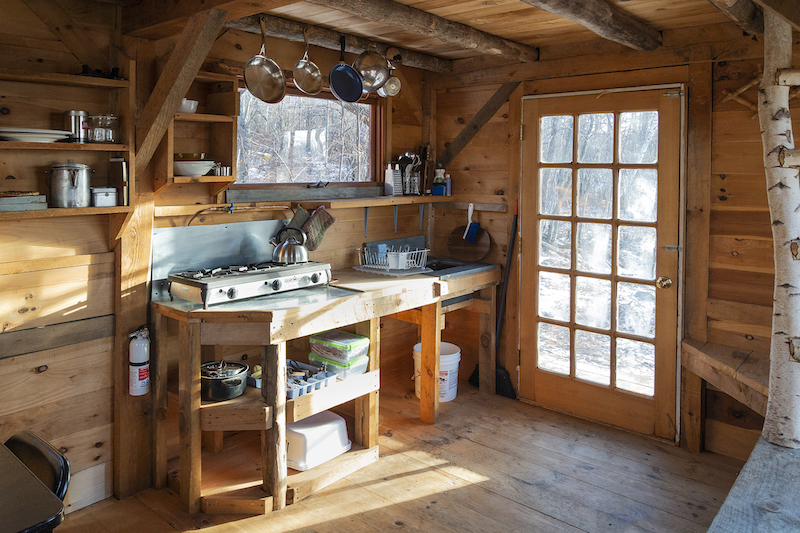
Thompson says the organization is “in conversation with the State to assess the condition of the Goodell House in Little River State Park to see if we can restore the historic structure for use as a hut.”
Little River State Park is located on a network of new mountain bike trails that abut Waterbury Reservoir and the proposed path of the Velomont Trail. It offers access to easy backcountry ski terrain in the Mount Mansfield State Forest. The organization is also exploring a hut location in Stowe’s Sterling Forest, just off the Catamount Trail.
More Huts You Can Ski To
The Stone Hut (book it for $225 per night), run by the State of Vermont and located near the top of Stowe’s Toll Road on Mount Mansfield, was renovated in 2016. Originally built by the Civilian Conservation Corps in 1935 as a warming hut, the cabin sleeps 12 and books out almost every year.
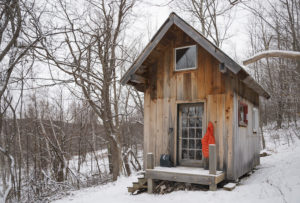
Additionally, the Green Mountain Club’s Bryant Camp ($97 per night for the whole hut) was restored in 2016 and sleeps eight and Bolton Lodge ($77-97 per night for the whole hut) sleeps eight and was restored in 2017. These popular ski-in facilities are also booked solid for the 2018-2019 season.
For cross country skiing, try the Merck Forest Cabins ($50-$90) in Rupert, or the Green Mountain Club’s Hadsel-Mares Camp ($75 per night) on Wheeler Pond in Bartlett. If you stay at Hadsel-Mares Camp, be sure to check out the Northeast Kingdom Backcountry Coalition’s (a chapter of the Catamount Trail Association) new network of backcountry ski glades on Mt. Hor and Bartlett Mountain in Willoughby State Forest. The glades, which are accessible from Hadsel-Mares Camp via the forest’s longstanding 12K network of cross country ski trails, are the first sanctioned backcountry ski trails to be cut on state forest land in Vermont. n
To book a hut visit vermonthuts.org (Chittenden Brook, Nulhegan Confluence Hut and Triple Creek Cabin), the greenmountainclub.org (three huts, including Bolton Lodge and Bryant Camp) or, for the Stone Hut in Stowe, vtstateparks.com/stonehut.html. Many are booked full by fall so start thinking now about next season or find out about cancellations.

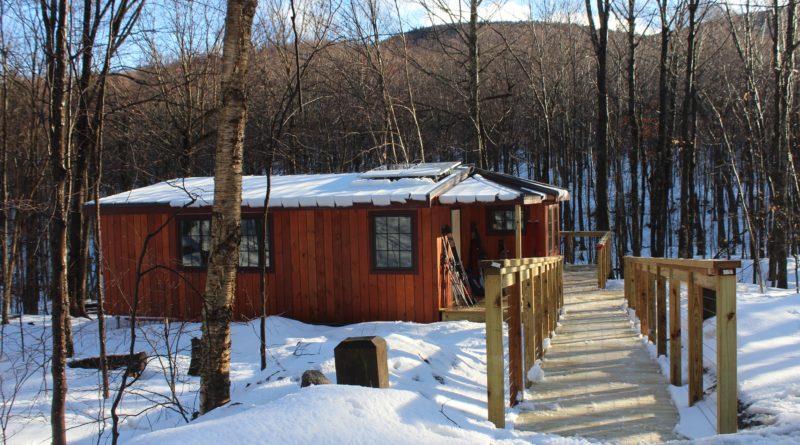
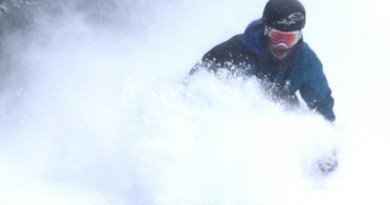
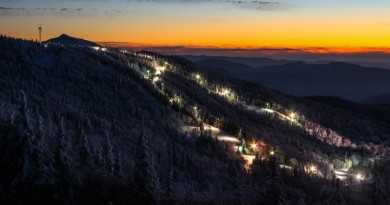
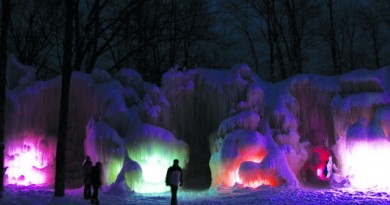
Pingback: Read The Winter Issue! – VT SKI + RIDE